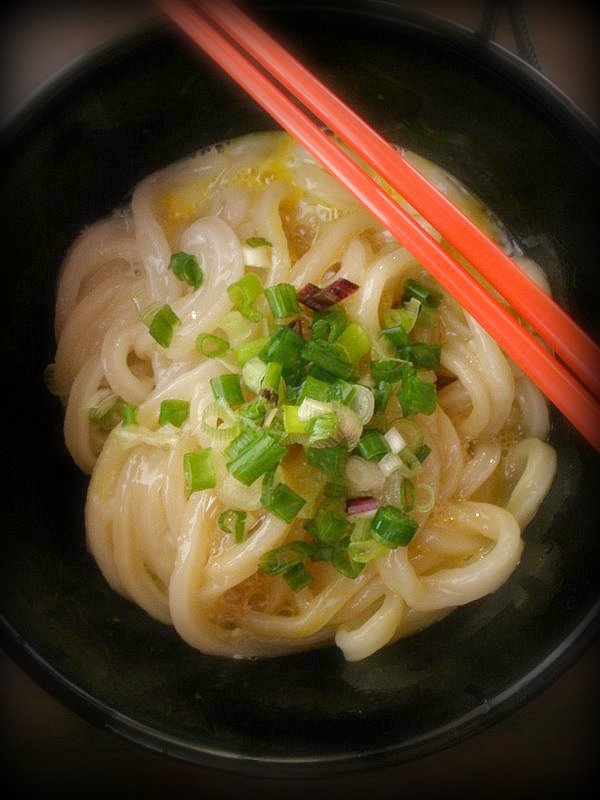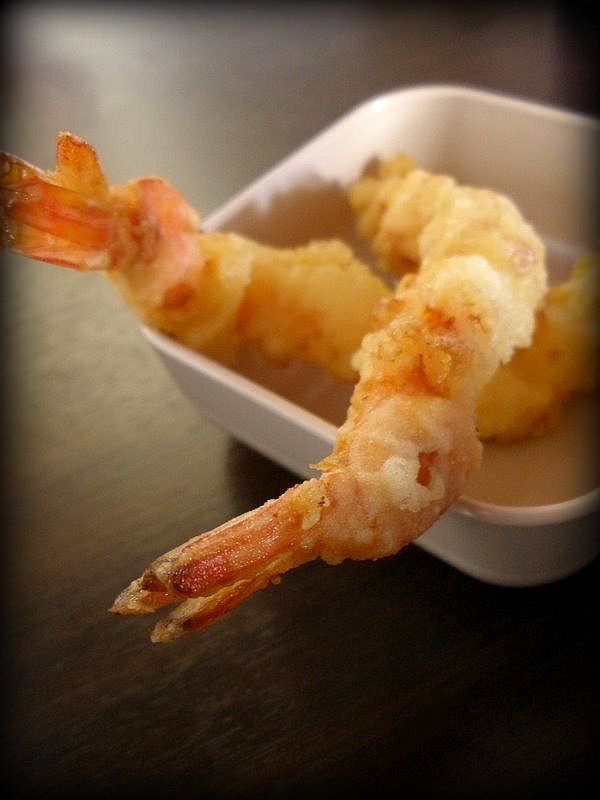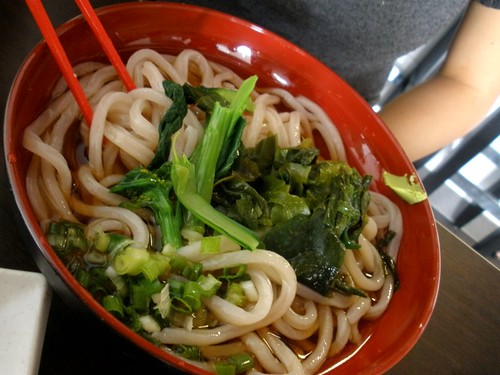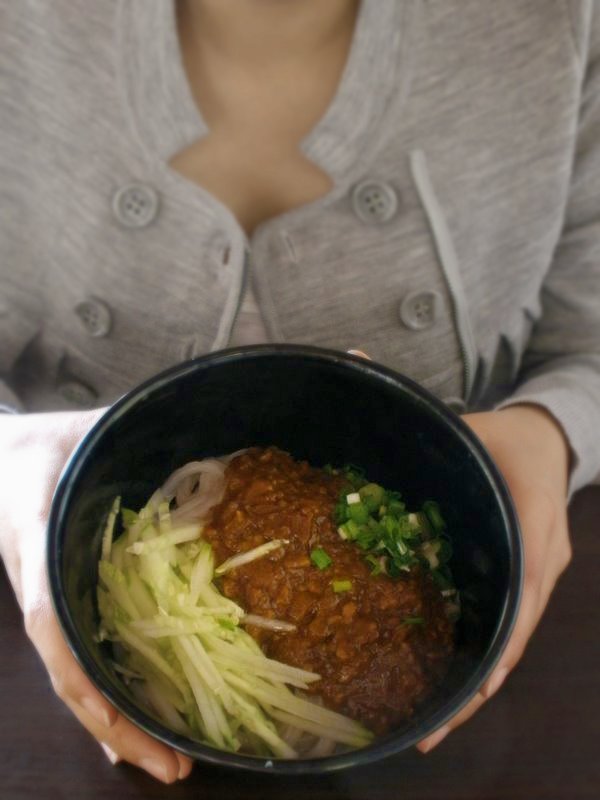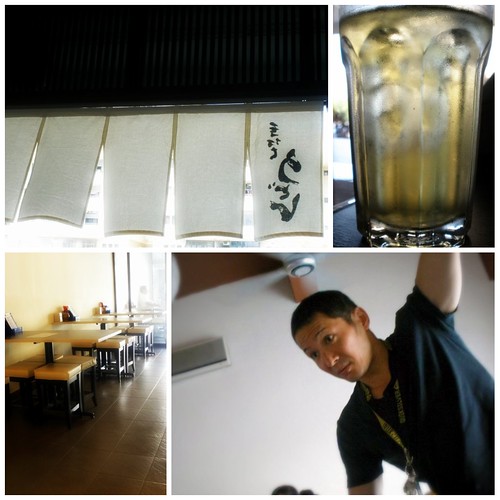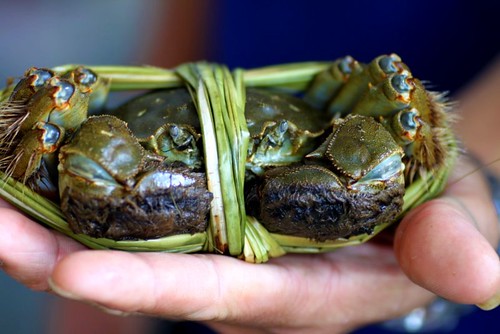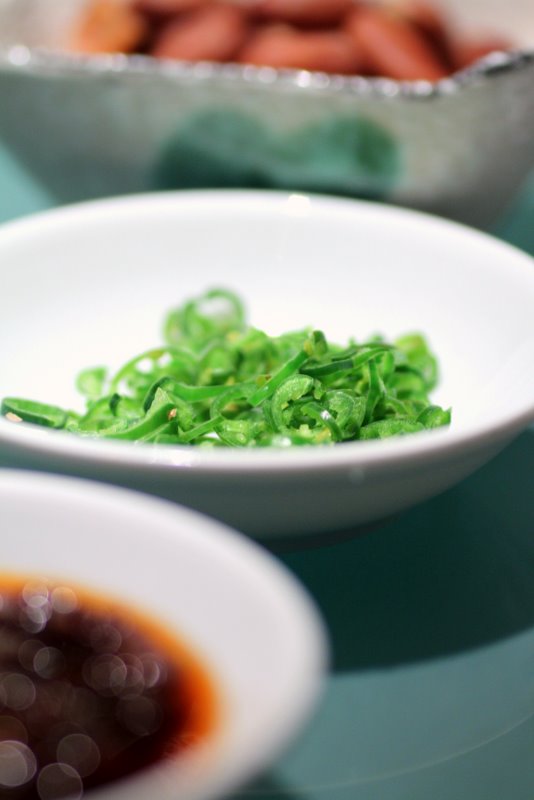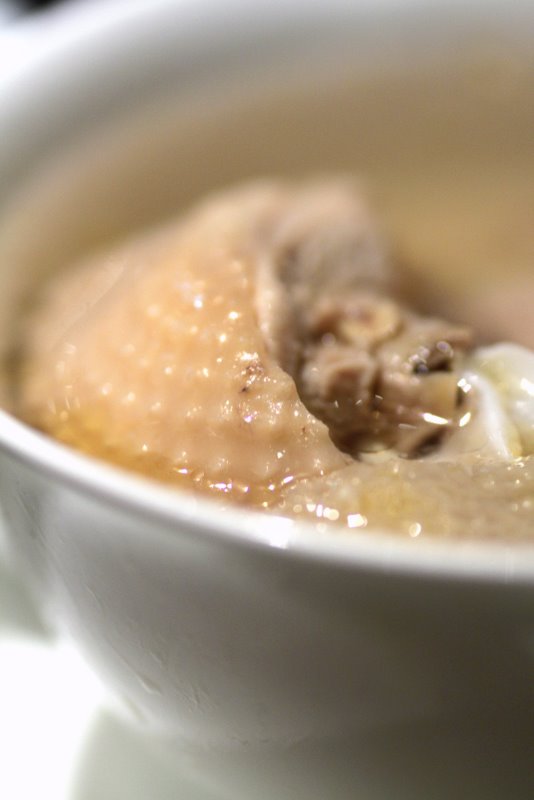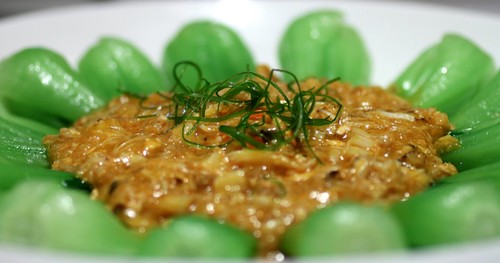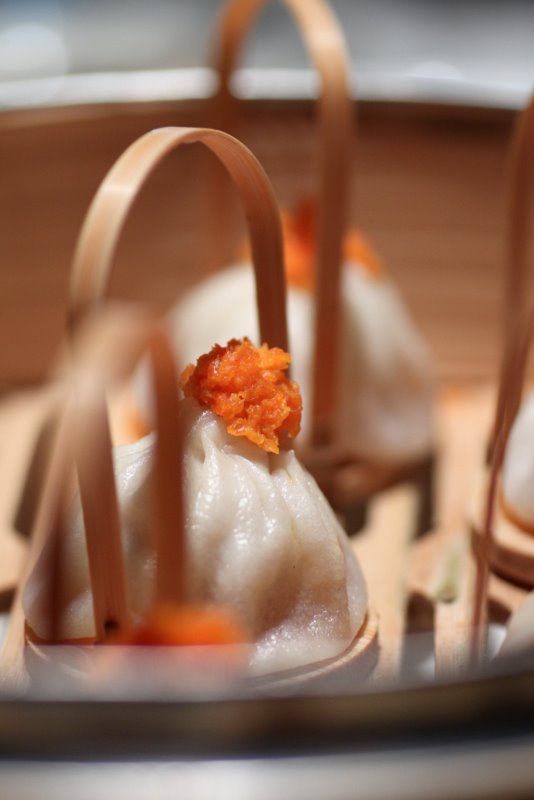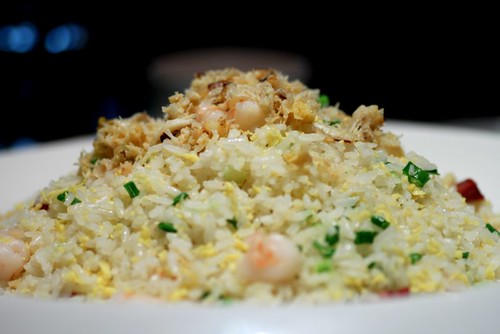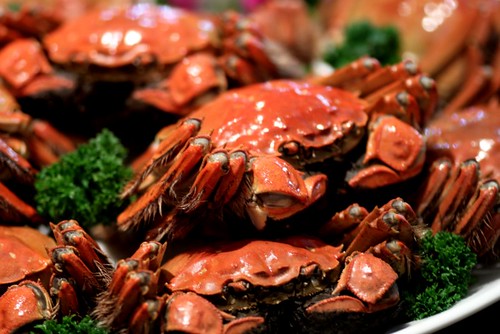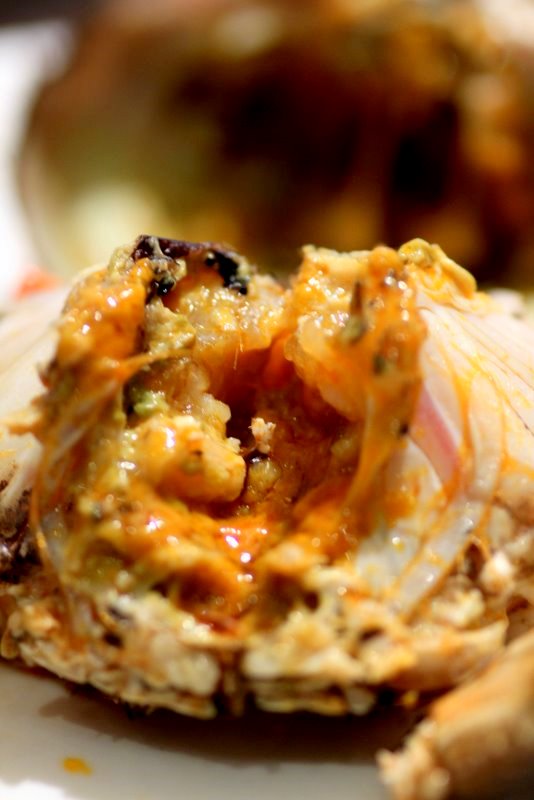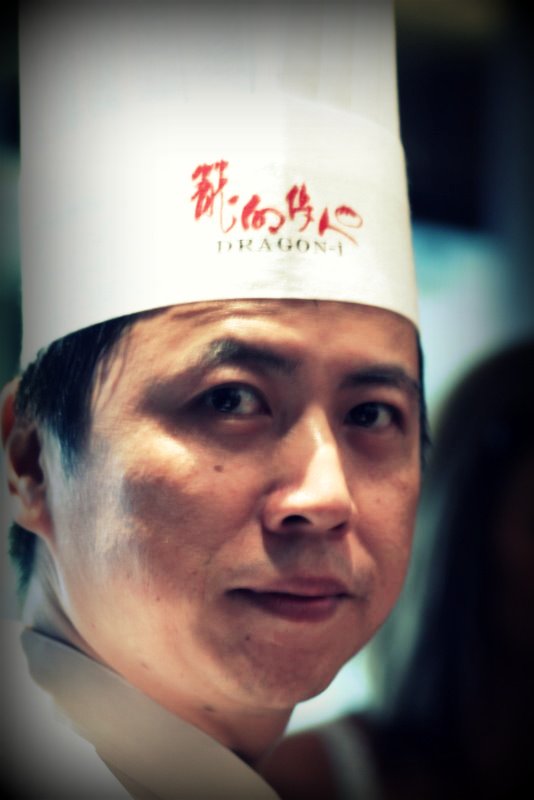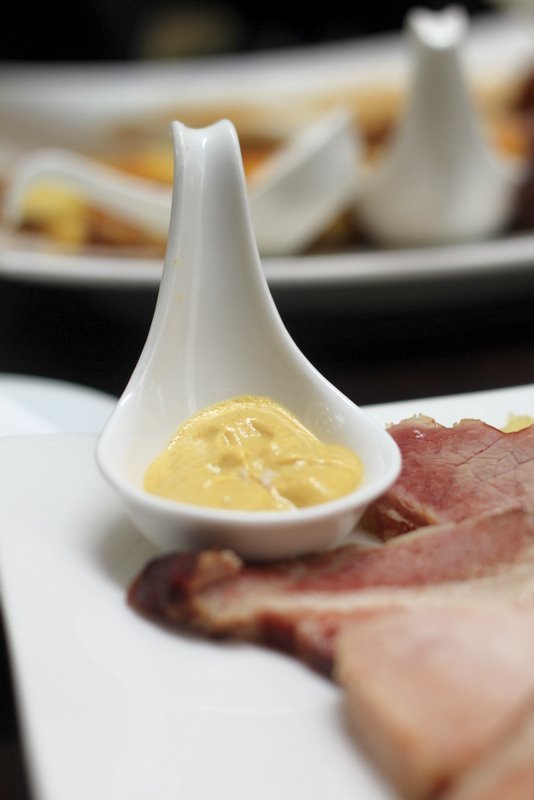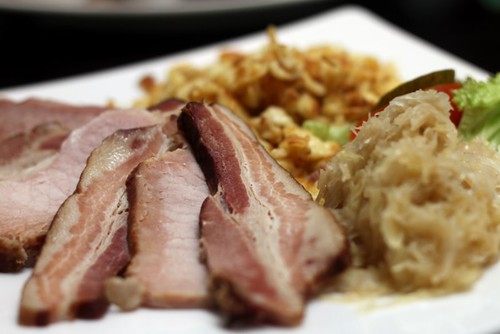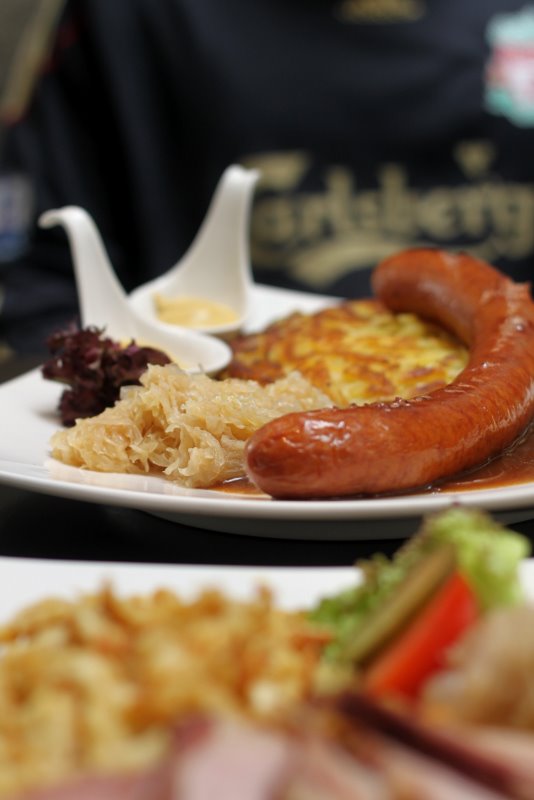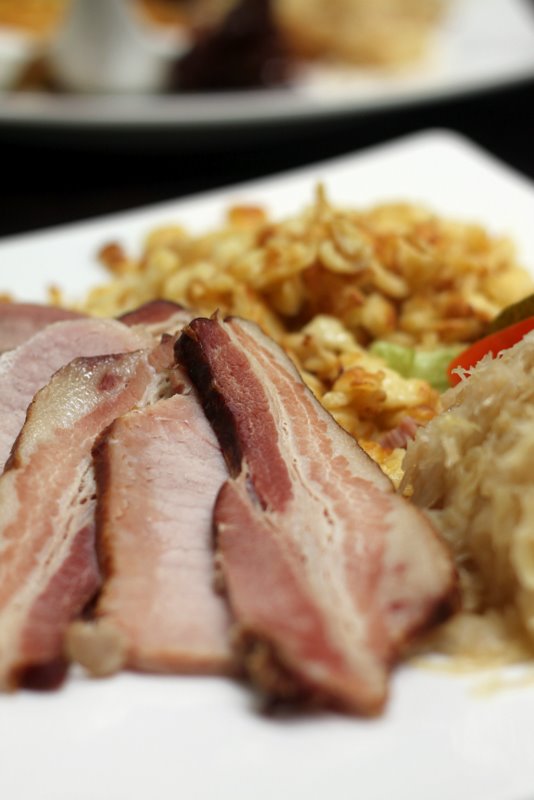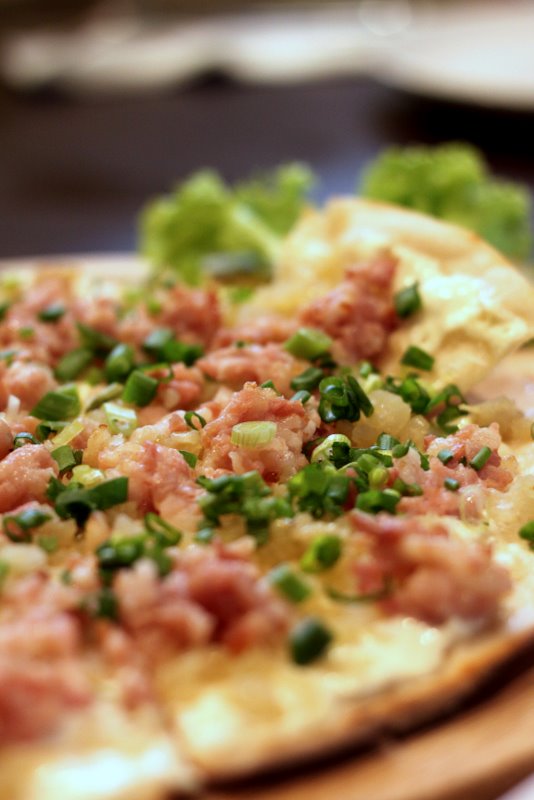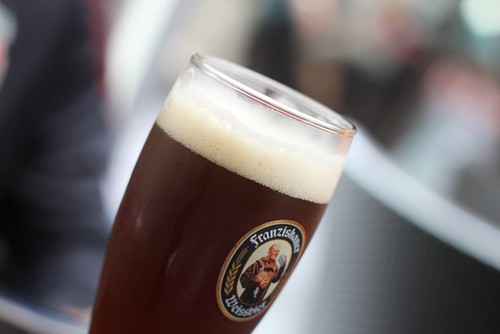The name Sanuki Udon is steeped in history. In fact, rumour has it that udon originated in the Sanuki province (Kagawa prefecture in Japan). Of course, there are other udons that rank up there with Sanuki’s – Akita’s Inaniwa Udon (what I like to call udon-on-a-diet due to its flatter shape) and Mizusawa Udon. Having said that, I am not sure if Sanuki Udon in Taman Bukit Desa, Kuala Lumpur, Malaysia can rival the udon from the Kagawa prefecture, but it is probably our best bet at getting good udon in our kampung. The udon is made daily in the shop, and the texture of the wheat noodles is chewy and has a good bite. Only udon (no Soba, please, thankyewbellymuch) is served in this no-frills place, and one can choose to have the noodles either hot or cold, and add toppings such as raw egg, ebi tempura, kakiage, wakame and kitsune on top of the choice of udon. There are only 7 types of udon preparations on the menu. Plain udon with soup is RM5, and similarly, the house special with egg (picture above) is priced at RM5. The most expensive bowls (kakiage udon and curry udon) cost RM7 each. The toppings are priced between RM1 and RM2 each. Sides are a little more expensive – karaage (fried chicken) is RM3 while the chinmi moriawase (assorted appetisers) is RM8. The chinmi I had on one of my visits consisted of crunchy pickled garlic that didn’t give you garlic breath, some body parts from scallops (the Japanese will eat anything), ginseng-like root and pickled jellyfish. I loved the karaage which came in 3 bite sized morsels, while the kakiage (mixed tempura vegetables) initially took some getting used to as I felt the flavour was a little too subtle, but the rather sweet taste lacking in savouriness grew on me. If you’re there early enough, ask for the freshly made mochi (glutinous rice cake). I’m not usually a fan of Japanese desserts, but I was bowled over by the home made mochi.
Fresh udon is also sold by the kilogram (now at a promotional price of RM15 per kg) and Japanese housewives can be seen carting away packets of these noodles from the shop.
Oh, I should also add that the owner, Seiji Fujimoto, is quite a dish. All 6 feet and rippling muscles of the man too.
Sanuki Udon
No.9, Jalan Bukit Desa 5
Taman Bukit Desa
58100 Kuala Lumpur.
Tel: 03-7980 3704
(Opening hours: I think they’re open daily for lunch and dinner. Looks like I shall have to pay Seiji Fujimoto-san yet another visit to reconfirm that information. Ahem.)
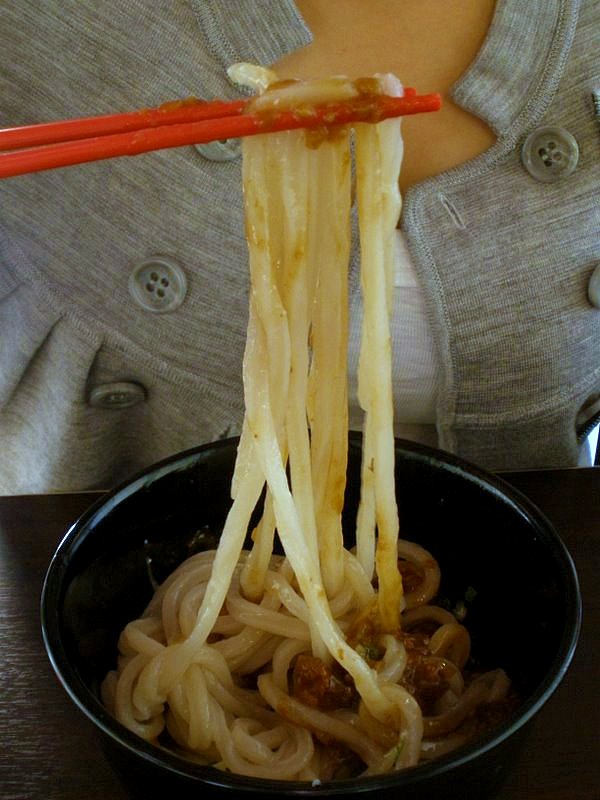
Dry cha cheong style (to suit the Malaysian palate)

Curry udon (with extra raw egg topping)

